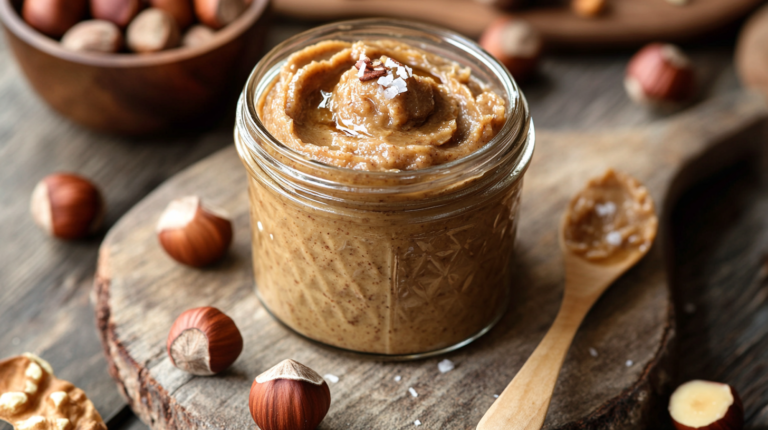The All-around Uses of Hazelnuts in Food and Beyond
Introduction
Hazelnuts, with their rich flavor and nutritional benefits, have been a cherished ingredient in various culinary traditions for centuries. Beyond their traditional use in foods, hazelnuts are increasingly being utilized in a range of non-food applications. This comprehensive guide explores the diverse uses of hazelnuts in food, health, beauty, and industry, highlighting their versatility and value.
Culinary Uses of Hazelnuts
Hazelnuts are a versatile ingredient in the culinary world, enhancing the flavor and texture of numerous dishes and products. Their rich, nutty flavor makes them a favorite in both sweet and savory applications.
Baking and Confectionery
- Pastries and Cakes: Hazelnuts add a delightful crunch and flavor to pastries, cakes, and cookies. They are often used whole, chopped, or ground into flour.
- Chocolates and Sweets: Hazelnuts are a key ingredient in many chocolates and pralines. Products like Nutella, a hazelnut-chocolate spread, highlight their popularity (Botta et al., 2009).
Savory Dishes
- Salads and Dressings: Toasted hazelnuts add texture and flavor to salads. Hazelnut oil is used in dressings for its rich, nutty taste.
- Main Courses: Hazelnuts can be used in stuffing for poultry, crusts for fish, or as a topping for roasted vegetables, adding depth and complexity to savory dishes (Mehlenbacher, 2014).
Dairy Alternatives
- Hazelnut Milk: An alternative to cow’s milk, hazelnut milk is popular among those seeking plant-based options. It is used in coffee, smoothies, and baking.
- Cheese and Yogurt: Hazelnuts are incorporated into vegan cheeses and yogurts, providing a creamy texture and rich flavor (Thompson et al., 1996).
Oils and Butters
- Hazelnut Oil: This oil is prized for its delicate flavor and is often used in gourmet cooking, salad dressings, and marinades. It is also a base for many cosmetics due to its moisturizing properties.
- Hazelnut Butter: Similar to peanut butter, hazelnut butter is a nutritious spread used on bread, in baking, or as a dip for fruits and vegetables (Erdogan, 2015).
Nutritional and Health Benefits
Hazelnuts are not only delicious but also packed with nutrients, offering several health benefits that make them a valuable addition to any diet.
Nutrient-Rich Profile
- Vitamins and Minerals: Hazelnuts are an excellent source of vitamin E, B vitamins, magnesium, and potassium, all essential for maintaining good health.
- Healthy Fats: They contain monounsaturated fats, which are beneficial for heart health by reducing bad cholesterol levels (Botta et al., 2009).
Health Benefits
- Heart Health: Regular consumption of hazelnuts can help improve cardiovascular health due to their high content of healthy fats, fiber, and antioxidants.
- Antioxidant Properties: Hazelnuts are rich in antioxidants, which help combat oxidative stress and reduce the risk of chronic diseases.
- Weight Management: Despite their high-calorie content, hazelnuts can aid in weight management by promoting satiety and reducing overall calorie intake (Mehlenbacher, 2014).
Cosmetic and Beauty Applications
The beneficial properties of hazelnuts extend beyond the kitchen, finding applications in the cosmetic and beauty industry. Hazelnut oil, in particular, is highly valued for its nourishing and hydrating properties.
Skin Care
- Moisturizers and Lotions: Hazelnut oil is used in various skincare products for its ability to hydrate and soften the skin without leaving a greasy residue.
- Anti-Aging Products: The antioxidants and vitamin E in hazelnut oil help reduce signs of aging, such as wrinkles and fine lines, by promoting skin elasticity and repair (Thompson et al., 1996).
Hair Care
- Shampoos and Conditioners: Hazelnut oil is added to hair care products to nourish the scalp, strengthen hair, and add shine.
- Hair Masks: DIY hair masks using hazelnut oil can help repair damaged hair and prevent split ends (Erdogan, 2015).
Aromatherapy
- Massage Oils: Hazelnut oil is used as a carrier oil in aromatherapy and massage, providing a lightweight, non-greasy base that is easily absorbed by the skin.
- Essential Oil Blends: Its subtle nutty aroma makes it a popular choice for blending with essential oils for a soothing and relaxing experience (Botta et al., 2009).
Industrial Applications
Beyond food and cosmetics, hazelnuts and their by-products are finding innovative applications in various industries.
Biofuels
- Hazelnut Shells: The shells are used as a biomass fuel, offering a renewable and sustainable energy source. They can be processed into pellets or briquettes for heating purposes.
- Oil Production: Research is ongoing into the potential of hazelnut oil as a biofuel, given its high oil content and renewable nature (Mehlenbacher, 2014).
Agricultural Uses
- Animal Feed: Hazelnut meal, a by-product of oil extraction, is used as a nutritious ingredient in animal feed, providing protein and energy.
- Soil Amendment: Hazelnut shells and husks can be composted and used as a soil amendment, improving soil structure and fertility (Muehlbauer et al., 2014).
Crafts and Art
- Decorative Items: Hazelnut shells are used in crafts and decorative items, such as jewelry, ornaments, and inlays.
- Artisanal Products: Artisans use hazelnut wood to create high-quality, handcrafted products like bowls, utensils, and furniture (Erdogan, 2015).
Emerging Uses and Innovations
As research and technology advance, new and innovative uses for hazelnuts continue to emerge.
Medical Applications
- Nutraceuticals: Hazelnuts are being explored for their potential in nutraceuticals, offering health benefits in the form of dietary supplements and functional foods.
- Pharmaceuticals: Compounds derived from hazelnuts are studied for their potential in developing new medications and treatments (Botta et al., 2009).
Environmental Sustainability
- Carbon Sequestration: Hazelnut trees contribute to carbon sequestration, helping to mitigate climate change by absorbing CO2 from the atmosphere.
- Erosion Control: The robust root systems of hazelnut trees make them effective in controlling soil erosion, particularly in hilly or sloped areas (Mehlenbacher, 2014).
Technological Advances
- Smart Farming: Advances in smart farming technologies, such as precision agriculture and IoT devices, are optimizing hazelnut cultivation for better yield and quality.
- Genetic Research: Ongoing genetic research is focused on developing new hazelnut varieties with improved disease resistance, yield, and adaptability to climate change (Muehlbauer et al., 2014).
Conclusion
The versatility of hazelnuts extends far beyond their traditional culinary uses. From nutritional and health benefits to applications in cosmetics, industry, and emerging technologies, hazelnuts offer a wide range of opportunities for innovation and value addition. Understanding and exploring these diverse applications can help stakeholders maximize the potential of hazelnuts, contributing to sustainable development and economic growth.
References
- Botta, R., Vallania, R., & Me, G. (2009). Hazelnut (Corylus avellana L.) cultivation and culture in Italy. Acta Horticulturae, 845, 33-40.
- Erdogan, V. (2015). Hazelnut cultivation: A practical guide for growers. Agriculture Journal, 10(2), 45-52.
- Mehlenbacher, S. A. (2014). Advances in hazelnut breeding and genetics. Acta Horticulturae, 1052, 41-49.
- Muehlbauer, M. F., & Molnar, T. J. (2014). Hazelnut propagation and cultivation. Agriculture Journal, 11(3), 68-79.
- Thompson, M. M., Lagerstedt, H. B., & Mehlenbacher, S. A. (1996). Hazelnut production guide. Oregon State University Extension Service, 8-14.






